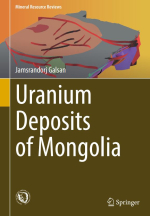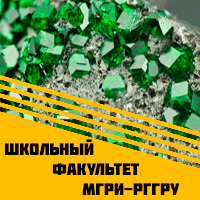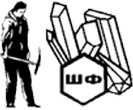Добрый день, Коллеги. Важное сообщение, просьба принять участие. Музей Ферсмана ищет помощь для реставрационных работ в помещении. Подробности по ссылке
Uranium deposits of Mongolia / Урановые месторождения Монголии
Geological exploration of Mongolia has been extremely inconsistent. From the frst regional exploration by Russian explorers of Asia to the present, little more than 41% of the country’s territory has been covered by areal geological surveys in combination with prospecting at a scale of 1:50,000. Regional geological surveys at a scale of 1:200,000, 1:500,000, and 1:1,000,000 cover 100% of the country. An aeromagnetic survey at a scale of 1:200,000 was carried out on 70% of the country and a gravimetric survey at a scale of 1:200,000–1:100,000 covers only large depressions in the south of the country. A medium-scale hydrogeological survey was carried out on 35% of the country. Eastern Mongolia has experienced the most recent and comprehensive exploration for uranium resources. The results of exploration and research conducted since the beginning of the 1970s, in Mongolia, have been summarized by N. A. Marinov and R. A. Khasin, co-authors, in the three-volume monograph “Geological Structure of the Mongolian People’s Republic”. Under the editorship of the same authors, a geological map of the Mongolian People’s Republic (1972) and a map of minerals (1973) at a scale of 1:1,500,000 were published. By 1975, geological and structural-formational maps of Eastern and Central Mongolia were compiled at a scale of 1:500,000 (Blagonravov, Borzakovsky); based on these maps, forecast metallogenic maps for gold, tungsten, tin, and fuorite were compiled (N. A. Marinov, R. A. Khasin, 1976– 1980s). In 1980, metallogenic maps of the Mongolian People’s Republic were published at a scale of 1:500,000 for copper, lead (D. Dorjgotov), and gold (G. Dejidmaa). <...>




